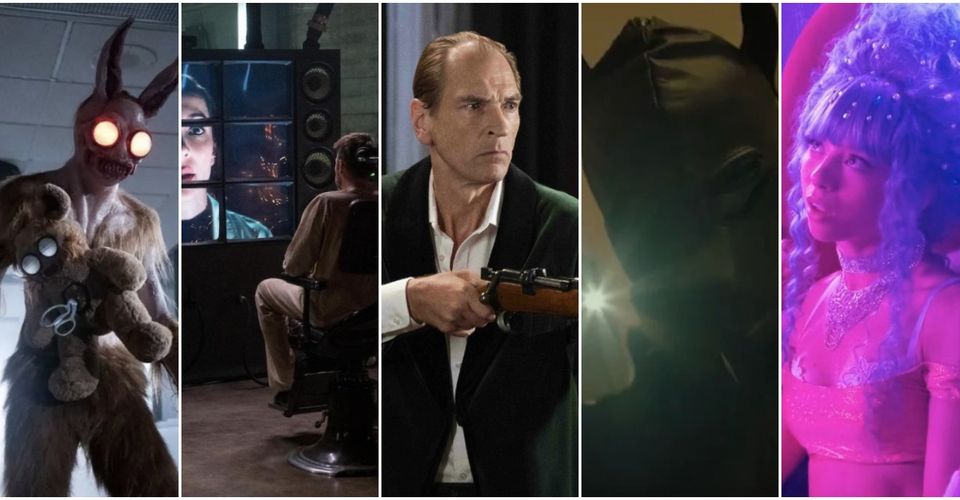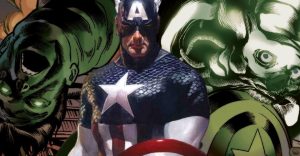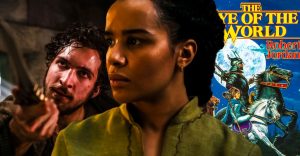Into The Dark Season 2 Episodes Ranked From Worst To Best

Hulu’s Into the Dark delivers monthly installments of seasonal horror stories; season 2 of the anthology series features many memorable additions, but how do they rank against each other?
The horror genre’s relationship with anthologies continues to get stronger; it’s now the norm for television and movies to indulge in this structure. Modern anthologies allow for lots of freedom and unique approaches for how to tell a horror story. One way that these different anthology projects can avoid fatigue is to make sure that they have a strong and sustainable idea at their core. This is where Blumhouse’s Into the Dark series on Hulu came in, offering feature-length movies that all take a different, horror-centric approach to popular holidays.
Horror anthologies have used different holidays for inspiration in the past, but Into the Dark’s strategy speaks to why Blumhouse’s effect on the horror genre has been so positive. Into the Dark pairs together unconventional angles on popular holidays with fresh and promising filmmakers behind the camera. Season 1 was a productive experiment for Into the Dark, but they’ve put together an even more eclectic lineup of films for season 2. Here’s every Into the Dark season 2 episode ranked from worst to best.
10. Crawlers (Saint Patrick’s Day)

Many of the installments in Into the Dark season 2 lean more heavily into comedic territory, but still find powerful subject matter to use as a foundation for the different movie offerings. Crawlers features a zany alien invasion that uses the drunken debauchery of Saint Patrick’s Day as its cover. People can act like monsters when they lose all of their inhibitions, and Crawlers explores that in a supernatural way. There are obvious allusions to Invasion of the Body Snatchers and Night of the Comet, but Crawlers ultimately comes down to the strength of friendship and how important it is to believe victims.
9. Uncanny Annie (Halloween)

Halloween can be both the easiest and most difficult holiday to use as inspiration for a horror movie. Uncanny Annie takes a drastically different approach to the holiday than season 1’s approach. Uncanny Annie combines a creepy urban legend with an eerie board game and attempts a horror version of Jumanji. Several college students find themselves trapped in a board game, pitted against an evil force that’s the only way to survive. Uncanny Annie feels like a smaller scale Blumhouse movie that would hit theaters and it has fun with its premise, but falls flat when compared to others.
8. Good Boy (Pet Appreciation Week)

Into the Dark season 1 tackles most of the mainstream holidays; season 2 benefits by taking bigger swings with how it approaches the seasonal calendar. Pet Appreciation Week is the focus in Good Boy and the installment tells an effective story about a fragile woman whose new emotional support dog will go to extreme measures to keep her happy. Good Boy’s plot is simple, but director Tyler MacIntyre properly balances the comedy and horror of this situation. A formidable cast led by Judy Greer and Steve Guttenberg also really sells the material.
7. Delivered (Mother’s Day)

Pregnancy can be a frightening experience for many different reasons, and there are numerous horror movies that dig into the utter feeling of helplessness that’s present when a very pregnant mother-to-be is under attack. Delivered finds an interesting perspective with which to dissect the traditions of Mother’s Day when a pregnant woman’s hesitation to become a mother is turned into a life or death hostage situation where her captor (Tina Majorino) has sinister plans for both her and her child. Delivered’s hostage situation feels like a watered down version of Stephen King’s Misery and the story verges into formulaic territory, but it’s anchored by strong performances.
6. My Valentine (Valentine’s Day)

Into the Dark’s My Valentine uses the world of pop stars to tell a moving horror story that’s based around Valentine’s Day. My Valentine looks at how artificial and cyclical the music industry is as it poses challenging questions about identity. Characters are locked together and forced to confront their past and truths. My Valentine turns into a very universal story that transcends the music industry. My Valentine can sometimes be a case of style over substance, but the exaggerated visuals and lighting help give this story more of a personality.
5. Midnight Kiss (New Year’s Eve)

Midnight Kiss was written by Erlingur Thoroddsen and directed by Carter Smith. It’s also the Into the Dark season 2 episode that most closely resembles a conventional slasher film. Midnight Kiss takes place on New Year’s Eve and explores an innocent game that results in a vengeful killer infiltrating a tight group of friends. Midnight Kiss effectively conjures a whodunnit atmosphere once the bodies begin to drop; it’s a flashy and effective take on the slasher genre. Midnight Kiss excels with by providing genuine chemistry between the characters, all of whom the movie doesn’t reduce to stereotypes, which is another one of its strengths.
4. The Current Occupant (Independence Day)

Politics have basically become their own sub-genre of horror at this point and Into the Dark season 2 takes on Independence Day in a way that really embraces tin hat conspiracy theories and brainwashed government sleeper agents. The Current Occupant tells an engrossing story where a detained man wakes up with no memory, but strongly believes that he’s actually the President of the United States and a coup is in process. The Current Occupant plays around with what is reality and what isn’t, and will keep the audience guessing until the credits roll, even if the story gets stretched thin at times.
3. Pooka Lives! (Pooka Day)

Pooka Lives! is easily the most inventive episode of Into the Dark. Pooka Lives!’s April airdate associates it with Easter, but the entry actually centers around a made up holiday, Pooka Day, in reference to one of season 1’s best installments. Pooka Day explores the power of storytelling and a viral Pooka Challenge sensation begins to will the murderous and cuddly beast into existence. Pooka Lives! is proof of how creative Into the Dark can get and it doesn’t hurt that the cast here, which includes Rachel Bloom, Felicia Day, Wil Wheaton, and more, is absolutely stacked.
2. A Nasty Piece Of Work (Christmas)

A Nasty Piece of Work uses the tension that accompanies the financial stresses of Christmas to create a highly prescient story. Two employees are pitted against each other to earn a life-changing promotion if they’re willing to prove just how committed they are to their job. Moral quandaries and committed performances help A Nasty Piece of Work resonate. There’s a lot of DNA shared between A Nasty Piece of Work and both Ready or Not, as well as The Hunt. A Nasty Piece of Work doesn’t feel derivative of these other movies, but rather an extension of just how cutthroat and status driven the world, especially the corporate sector, has become.
1. Pilgrim (Thanksgiving)

The very best Into the Dark episodes are the ones that have a strong emotional core to fall back on rather than just a creative spin on a holiday. Much like with season 1’s exceptional Culture Shock, season 2’s Pilgrim has similar things to say about privilege and gender equality. Thanksgiving historical reenactments that pride themselves a little too much in their authenticity create truly uncomfortable and thought provoking material. Director Marcus Dunstan of both the Saw and The Collector franchises really makes Pilgrim work and Into the Dark essentially pulls off a better version of what’s attempted in the 2020 horror movie, Antebellum.
About The Author

















